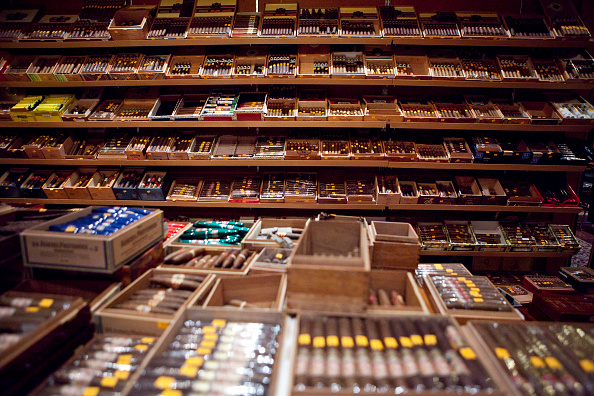
When you walk into a cigar shop, you’re faced with hundreds of options to choose from. How do you select a stogie that you’re going to enjoy?
When choosing a cigar, you can really break the selection process into two parts.
First, you’ll want to filter your choices based on your broad preferences in a few categories: body, size, and shape.
Once you find a cigar that meets those parameters, you’ll next want to make sure it’s a good quality smoke.
Below we’ll explain both aspects of this selection process, so that you can walk out of the cigar shop with a high quality stogie, that’s right for you.
Select a Cigar Based on Your Personal Preferences
Cigars come in a variety of shapes and sizes, and choosing among them is really a matter of personal preference.
Body. Just like with beers, there are a range of cigars from light (and more mellow) to dark (and more “full-bodied†— that is, stronger and more intense) and everything in the middle (your goldilocks cigars, if you will). You’ll probably have to try a few out to determine what you like. I have found, however, that your beer preferences often say a lot about your cigar preferences. Folks who like dark stouts often like dark cigars; folks who like lighter beers often prefer the more mellow stogies. If you aren’t a beer person, get a small sampler pack that includes a variety of bodies and do some experimenting!
Size. First of all, size has nothing to do with flavor. A bigger cigar won’t necessarily be stronger or better. There are two ways cigar size is measured: length, in inches, and width (called ring gauge). Gauge is listed by 64ths of an inch — so a 20 ring gauge is 20/64ths, a 49 is 49/64ths, etc. Many cigar price labels/listings (both in stores and online) will include size in the form of “inches long X gauge.†So a “5 X 50†is a 5-inch cigar, with a 50 gauge.
So if size doesn’t directly determine the quality or strength of the cigar’s flavor, how much does it matter?
Length really just correlates with how long you want your smoke to last. The longer the stogie, the longer it will take. For many smokers, a 6-inch cigar will last about an hour.
As for ring gauge, many aficionados like something on the smaller end (most cigars are between 40-50). This is because the highest quality tobacco leaf is always the wrapper, so with a smaller diameter, you have a better ratio of wrapper leaf to filler leaf. With a larger diameter, you might have more cigar to smoke, but more of that cigar is filler leaf (which can still be great, mind you).
Shape. There are two classes of cigar shapes: parejos and figurados. Parejos are your classically-shaped cigars with one end open, and one end, usually rounded, that needs cutting. The majority of cigars fall into this broad category, within which there are numerous sub-categories of cigar shapes.
Figurados are anything other than that classic shape. They tend to have a bullet shape, and are tapered into a sharp point at the closed end. Some experts say this concentrates the smoke more and gives you a fuller flavor. As an occasional smoker, I’ve not personally found much of a difference.
Mix and match all three of these characteristics of cigars to see what you like best!
Select a Cigar Based on Quality
The three attributes described above are more about preference than true quality: you can have high quality cigars in every range of these characteristics, and poor quality cigars as well.
Thus once you’ve sifted your choices based on your preferences, you want to determine whether a cigar you’ve got your eye on is also a good quality stogie.
Evaluate a potential cigar based on the criteria below: they apply to all cigars, regardless of body, size, or shape.
Judge the book by its cover — that is, the cigar by its wrapper. The wrapper should have no gaps or tears, and it should not be cracked. You want a smooth and clean exterior, which signifies quality craftsmanship.
The cigar should be a uniform color. It should not be spotted, or have places that are significantly darker than others. It should not have any spots of mold, which does occur (they’re stored in a humid environment, after all). You want a single, nicely uniform color on the entirety of the cigar.
Don’t buy dry. If you hold the cigar and squeeze it just a little, it should feel firm and like it has some give. If it crackles and feels dry, avoid it. It probably hasn’t been stored properly, and will burn too hot upon smoking.
Feel for a uniform tobacco fill. If you lightly squeeze the cigar every half inch or so, the filling should feel uniform. You don’t want any divots or bulges, indicating a poor job of filling.
Give it a good smell. You can divine much of what a cigar will taste like by giving it a hearty whiff. If you’re in a store, and a cigar is in a plastic wrapper, ask if you can give it a sniff. Hold it close to your nose (but don’t let it touch your nose — gross), and breathe in nice and deep. If it’s an appealing smell to you, it’ll probably taste good too. If something smells off in any way, give it a pass.
Tags: Vices

